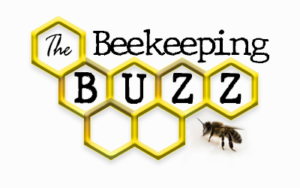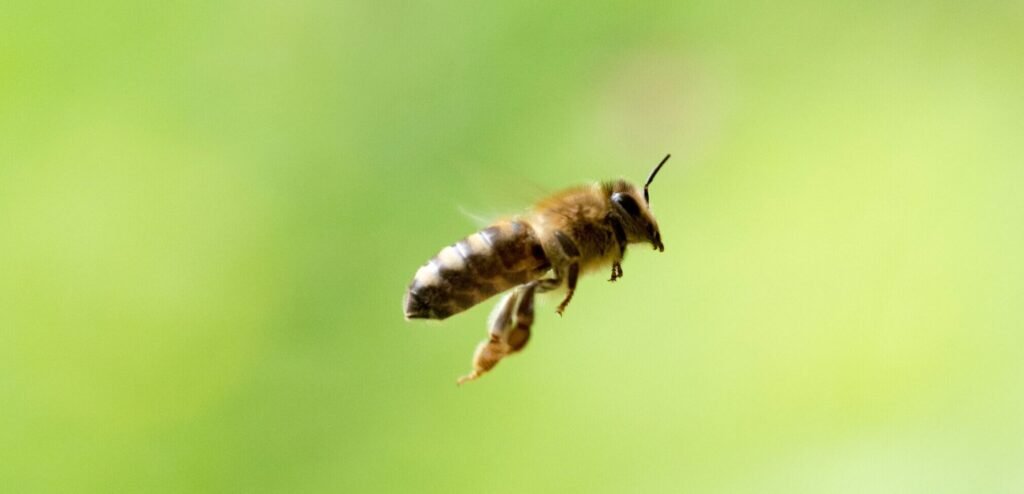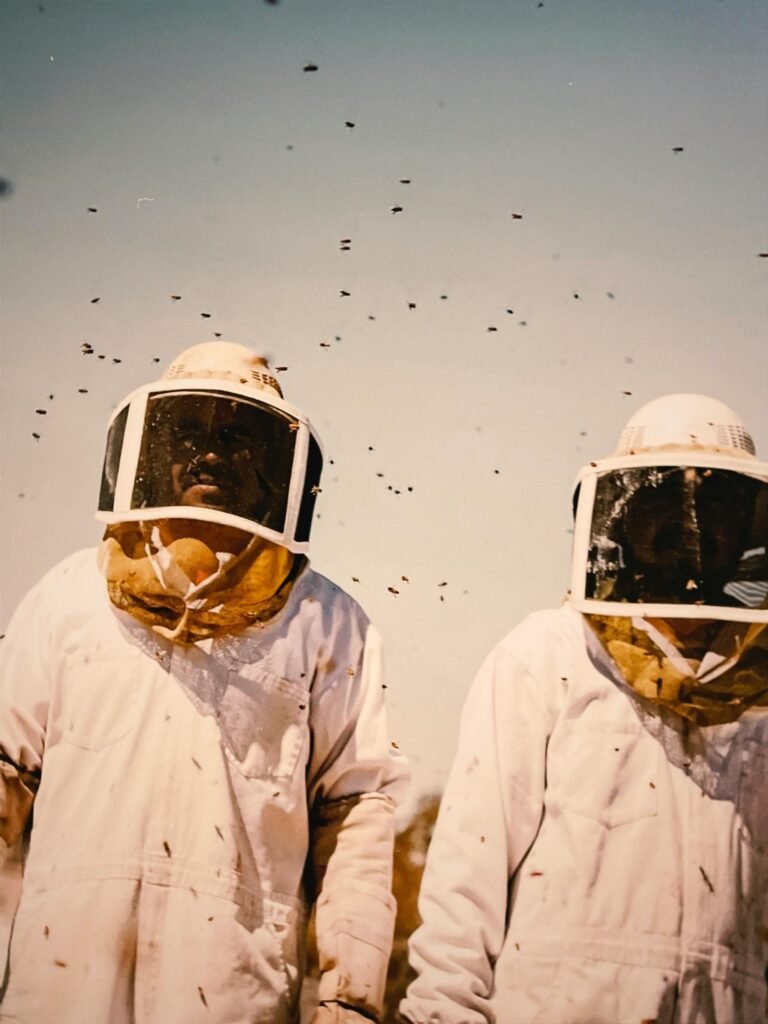Finding the Perfect Spot for Your Bee Hive
Beekeeping is like setting up a tiny hotel for your buzzing guests, and location is everything. You wouldn’t want to stay in a hotel in the middle of a desert, would you? Similarly, honey bees prefer a home that’s just right. From the direction of the entrance to the distance from food and water sources, every detail can affect your colony’s productivity and health. Whether you’re planning a bee yard build, setting up hive stands, or making critical decisions about your bee yard setup, this guide will help you find the perfect place for your bees. So, let’s roll up our sleeves and start the journey to creating a bee-friendly haven.
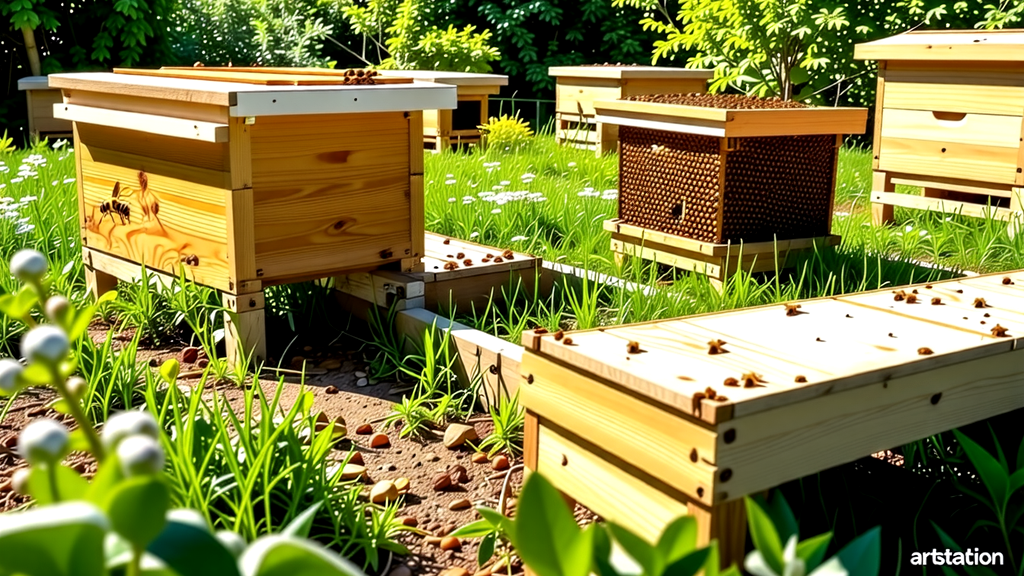
Evaluating Suitable Locations for the Hive
Determining the perfect spot for your bee hive is no small task. Remember, honey bees love a cozy, elevated spot where they can rest, forage, and buzz around, away from floods and nosy bears. So, keep your eyes peeled for a location that ticks all these boxes.
While sunlight is the bees’ best friend, too much of it can lead to pesky mold. A well-shaded spot, shielded from strong winds, is your golden ticket. Make sure your bee yard is within a stone’s throw of food and water sources, preferably within two miles. And, of course, the ground should be dry enough to keep the hive level and prevent sinking.
Now, think about your hive like a tiny castle. Just like castles have moats to keep out unwanted visitors, your hive needs a bee yard fence for protection. This fence will keep skunks, bears, and other predators at bay.
You’ll want to mimic the bees’ natural habitat to keep them happy and productive. This means providing moderate shade, easy access to food and water, and hive stands to elevate their home. Aim the entrance southeast so the bees can bask in the morning sun and start their day early.
Remember, bees are nature’s workers, and they’ll need plenty of food and water to keep up their energy. Having a water source nearby is critical. And don’t forget about the plants. Lavender, sunflowers, clover, rosemary, and borage are all top picks for attracting these tiny pollinators. So, get those green thumbs ready and start planting!
Finally, space out your hives – at least 6 inches apart. This way, the bees have room to move around, and you reduce the risk of diseases spreading. So, get out there and start setting up your bee boxes. Happy beekeeping!
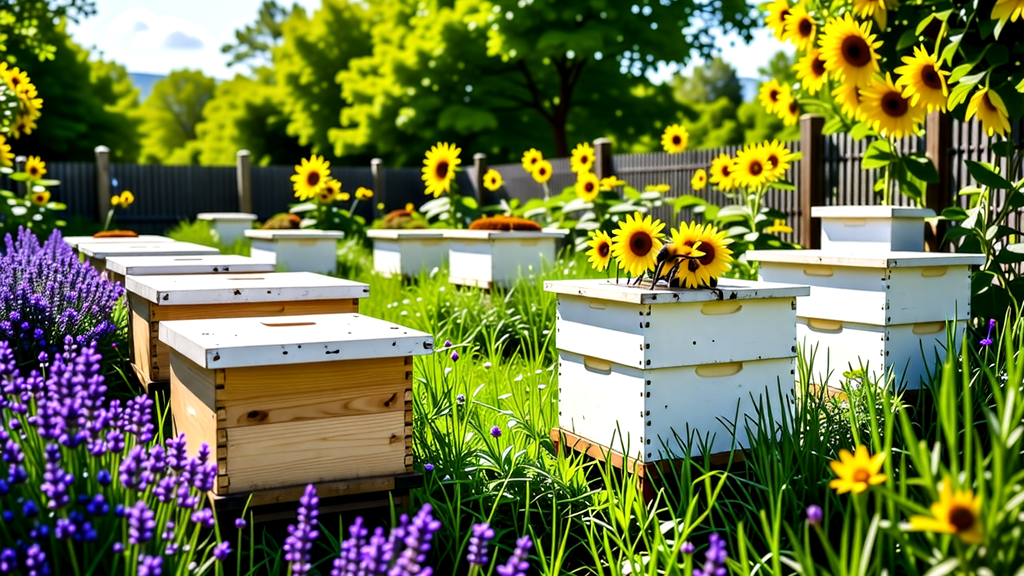
6 Critical Factors to Consider in Bee Hive Placement
Shifting our attention to the process of choosing the right spot for your bee hives, we need to consider six key factors.
- Sun Exposure: Direct sunlight is a must but avoid too much shade that can lead to unwanted visitors like mold and pests.
- Shelter from Wind: Keep hives safe from gusty winds with either natural or man-made windbreaks.
- Nearby Food: Surround your bee yard with sources of pollen and nectar, within a two-mile radius if possible.
- Water Availability: Bees need water too, so make sure there’s a source nearby that’s safe and accessible for them.
- Dry Terrain: Opt for dry, firm ground to prevent your hives from sinking or becoming unstable.
- Hive Spacing: Place your bee boxes at least 6 inches apart for easy access and to keep diseases at bay.
In the wild, honey bees are choosy about their homes, often opting for elevated, sheltered spots near lush fields and forests. Replicating this environment can be beneficial for your hive’s health and productivity. Using hive stands to simulate elevation and installing wind barriers can help create a more natural environment akin to their original habitat.
Orientation is key too. Aim the hive entrance southeast to catch the early morning sunlight, encouraging bees to start their day early. This also provides protection against harsh northwest winds.
Lastly, don’t forget the importance of food and water. Having these essentials nearby helps the hive run smoothly and efficiently. So, consider planting bee-friendly plants like lavender, sunflowers, clover, rosemary, and borage near your hives. These provide a steady supply of nectar and pollen, keeping your honey bees happy and productive.
The Role of Natural Habitat in Bee Hive Placement
Observing how bees interact with their surroundings in the wild provides valuable insights for bee hive placement. Bees commonly favor tree hollows, which are often elevated and shaded spots close to fields and woods. Taking a leaf out of nature’s book, beekeepers can enhance the wellbeing and productivity of their colonies by emulating these conditions.
Hive stands, for instance, can mimic the elevation bees naturally seek. These stands not only provide a dry, level base for your hive, but also deter ground predators. Wind barriers, on the other hand, can offer the protection bees would usually find in a forest setting.
Hive placement doesn’t stop at simulating the bees’ natural habitat. The orientation of the hive entrance plays a significant role in the hive’s efficiency. A southeast-facing entrance captures the morning sun, encouraging early foraging. This alignment also shields the hive from chilling northwest winds.
A well-placed hive also requires proximity to food and water sources. Bees should have access to nectar, pollen, and water in the immediate vicinity. This not only sustains the colony but also saves them from expending unnecessary energy.
Lastly, consider growing plants near your hives that are honeybee favorites. Lavender, sunflowers, and clover are just a few examples of plants that provide abundant nectar and pollen, making your bee yard a veritable paradise for your buzzing friends.
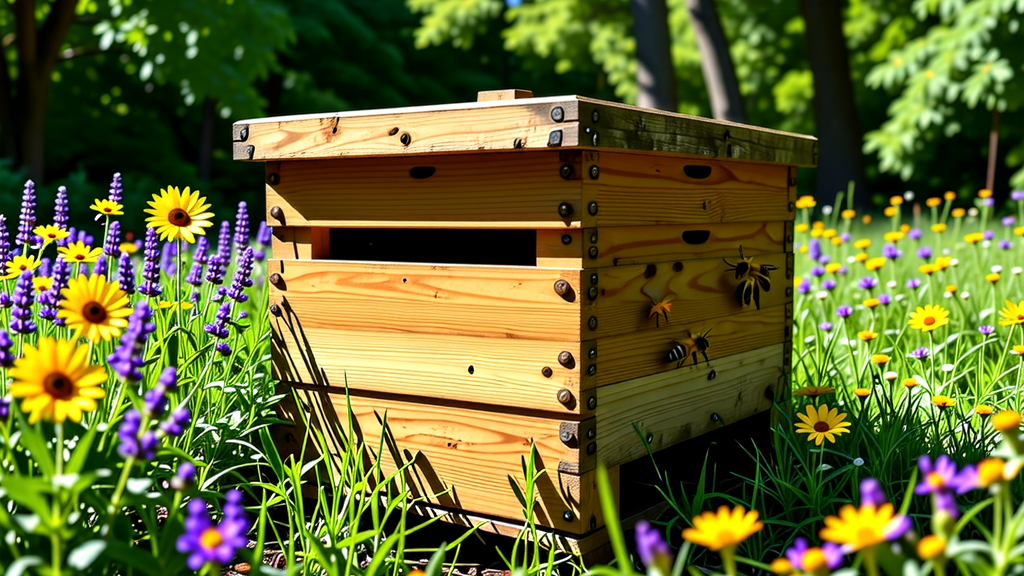
How to Mimic the Bees’ Natural Habitat for Better Results
Recreating a natural setting for honey bees can yield benefits for your bee yard. A pivotal factor here is the placement of the bee hives. Bees are naturally drawn to elevated, sheltered spots with easy access to food and water. You should aim to replicate this in your bee boxes.
Think of the hives as mini condos for the bees, with each one needing just the right amount of sunlight and shade. Too much shade can invite mold and pests. Depending on your USDA zone, you may need to adjust the amount of shade your hives receive.
Don’t let the winds blow your bees off course. Strong winds can knock over hives, so use natural or artificial barriers for protection.
Food and water are as vital to bees as they are to us. Ensure your bees have access to an abundance of pollen and nectar sources. A nearby water source with shallow areas or floating objects can keep your bees hydrated without the risk of drowning.
No one likes a sinking ship, or in this case, a sinking hive. Aim for a dry ground location to keep the hive level.
Finally, bees like their personal space just like we do. Maintain a distance of at least 6 inches between hives to reduce the risk of diseases spreading.
Now, this might feel like a lot to take in, but remember, you’re not only creating a home for your bees, but also a productive environment that’s a close mimic of their natural habitat. For a better understanding of how this works, check this essential item. It’s a handy tool that many beekeepers swear by.
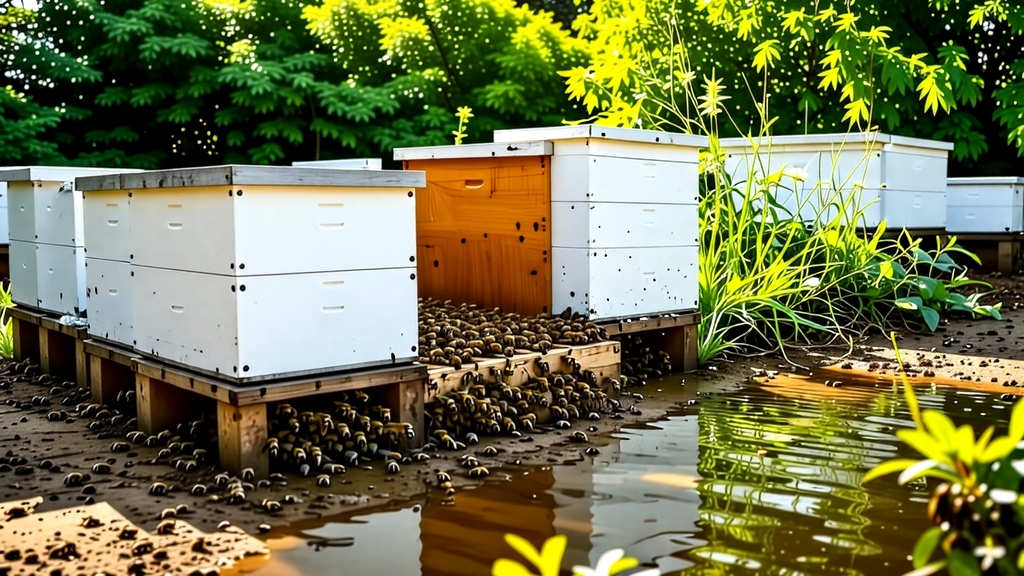
Positioning the Hive: Direction and Spacing
Let’s talk about the strategic arrangement of your bee hives, tackling both direction and adequate spacing. Bees are early risers, so positioning the hive’s entrance to face southeast exposes them to the morning sun. This encourages early foraging, which ultimately leads to increased honey production. It’s like giving your bees a gentle nudge to start their day.
But it’s not all about the sun. This orientation also shields your hive from prevailing northwest winds. Think of it as a built-in windbreaker for your bees, helping maintain a cozy environment within the hive.
Spacing is another crucial aspect of bee hive placement. Bees are a bit like us humans – they appreciate their personal space. So, maintain a minimum distance of 6 inches between hives. This allows easy access for inspection and management, while also minimizing the risk of disease transmission.
In short, the direction and spacing of your hives can impact the productivity and health of your honey bees. So, when setting up your bee yard, remember to position your bee boxes with a southeasterly orientation and leave sufficient space between each hive. It’s a simple yet effective strategy to keep your bees buzzing happily.
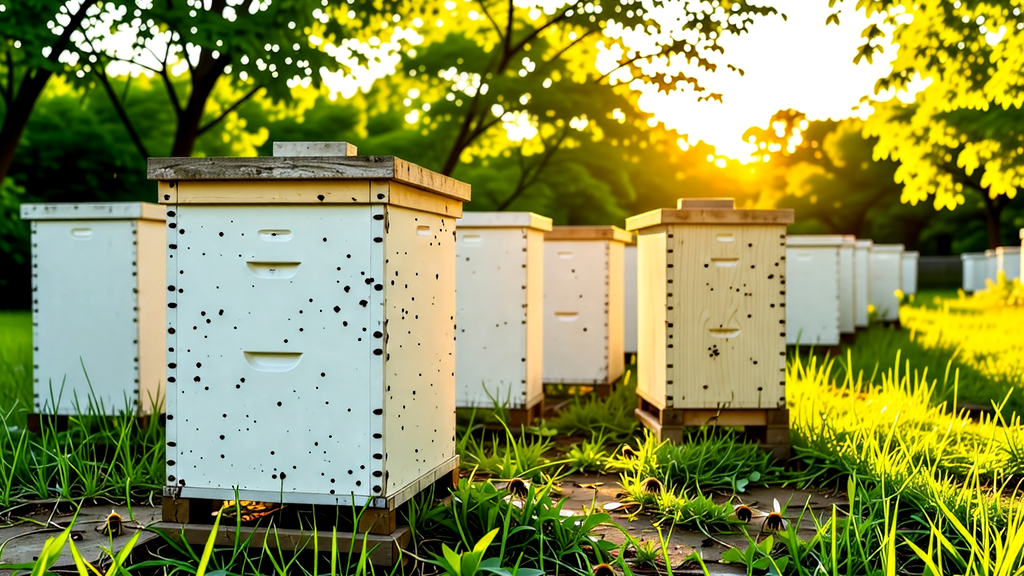
Why Facing the Entrance Toward the Southeast Matters
The strategic positioning of bee hives matters, particularly with respect to the direction their entrances face. Aligning the entrance toward the southeast has a direct impact on the hive’s productivity and longevity.
This orientation benefits the hive in two major ways. Firstly, it allows the hive to absorb the morning sun, warming up the hive and signaling to the bees that it’s time to start foraging. This early start can lead to a remarkable increase in the amount of pollen and nectar collected, which is vital for the survival of the hive.
The second advantage is the shield it provides against the chilly northwest winds. By having the entrance face southeast, the structure of the hive blocks the cold winds, preventing heat loss. This is particularly vital during winter months when bees are clustering to generate heat. Unnecessary ventilation can disrupt this process, leading to a cold hive and potential loss of life.
Aligning your hives to face southeast isn’t just a random suggestion, but a technique grounded in bee biology and environmental factors. It’s one of the many factors that contribute to successful beekeeping, helping the bees to thrive and produce honey. Remember, a happy hive is a productive hive.
So when you’re setting up your bee yard, consider the orientation of the hives. Your honey bees will thank you for it.
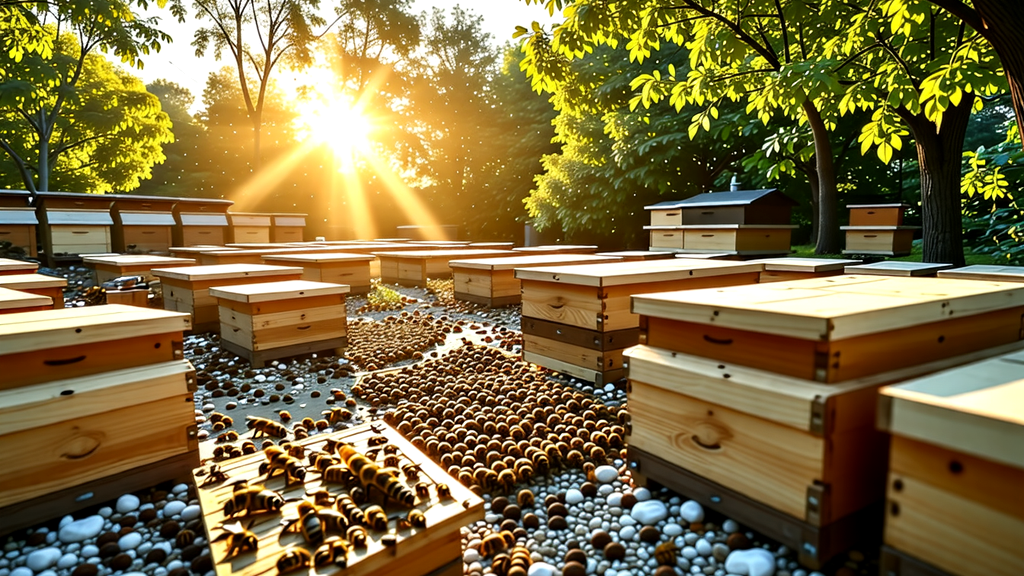
The Importance of Food and Water Sources Nearby
Knowing where your bees can find their food and water is a key factor in bee hive placement. Bees require nectar, pollen, and water to keep their colony functioning. If these resources are not close by, bees have to expend extra energy, which can reduce hive productivity.
So, how close should you place your hive to these resources? Ideally, pollen and nectar sources should be within a two-mile radius of your bee yard. This range provides bees with plenty of options, without making them fly too far. Remember, a bee’s main job is to collect pollen and nectar, so the closer these resources are, the more efficient your bees will be.
Water is also vital for bee survival. It helps them regulate hive temperature and aids in their digestion process. During summer, bees use water to cool the hive through evaporation. So, having a water source nearby is essential. However, because bees can drown, it’s important to provide shallow areas or floating objects in the water source.
Planting flowering plants like lavender, sunflowers, clover, rosemary, and borage near your hives can provide an ample supply of nectar and pollen. Just remember to maintain space between your hives, about 6 inches apart, to reduce the risk of diseases spreading.
In conclusion, for successful bee hive placement, proximity to food and water sources is an important consideration. By understanding this, you can help your honey bees thrive and keep your bee yard buzzing with activity.
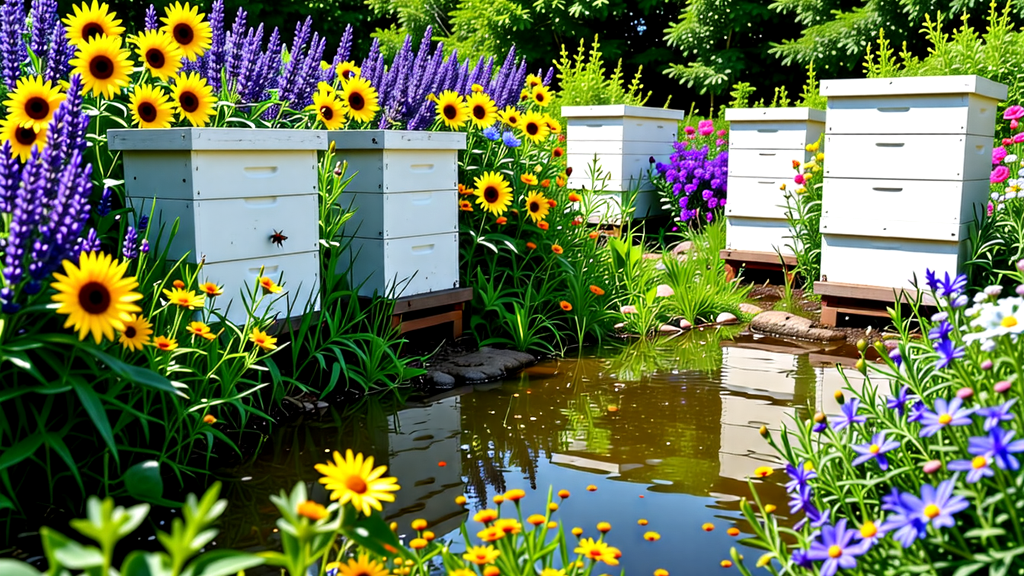
Attracting Honey Bees: The 5 Best Plants to Grow Near Your Hive
Tempting honey bees to your bee yard is a piece of cake when you know what they love. And what’s that? Plants, of course! The choice of greenery around your hives can make a world of difference, creating an attractive bee buffet right next door. Let’s dive into the best five plants that will have your honey bees buzzing with joy.
- Lavender: A bee’s dream come true. Lavender is a rich source of nectar which bees adore. Plus, this plant’s lovely scent and vibrant purple hue will add charm to your bee yard.
- Sunflowers: These sunny bloomers are a big hit. Sunflowers offer ample pollen, a crucial part of the bee diet.
- Clover: This plant is a bee magnet. Clover provides a generous supply of nectar, and its small, tubular flowers are perfect for bees to access.
- Rosemary: A win-win for you and the bees. Rosemary is an excellent source of nectar and pollen, and its fragrant leaves can be used in your kitchen.
- Borage: A bee favorite. Borage produces a wealth of nectar and its blue, star-shaped flowers are a treat to the eyes.
Incorporating these plants into your bee yard can improve hive productivity. They provide bees with a nearby food source, limiting their need to travel. This proximity reduces their energy expenditure, promoting hive health and honey production. So, when planning your bee hive placement, remember to include these plants in your blueprint. You might even pick up some gardening tips from Defenders along the way!
